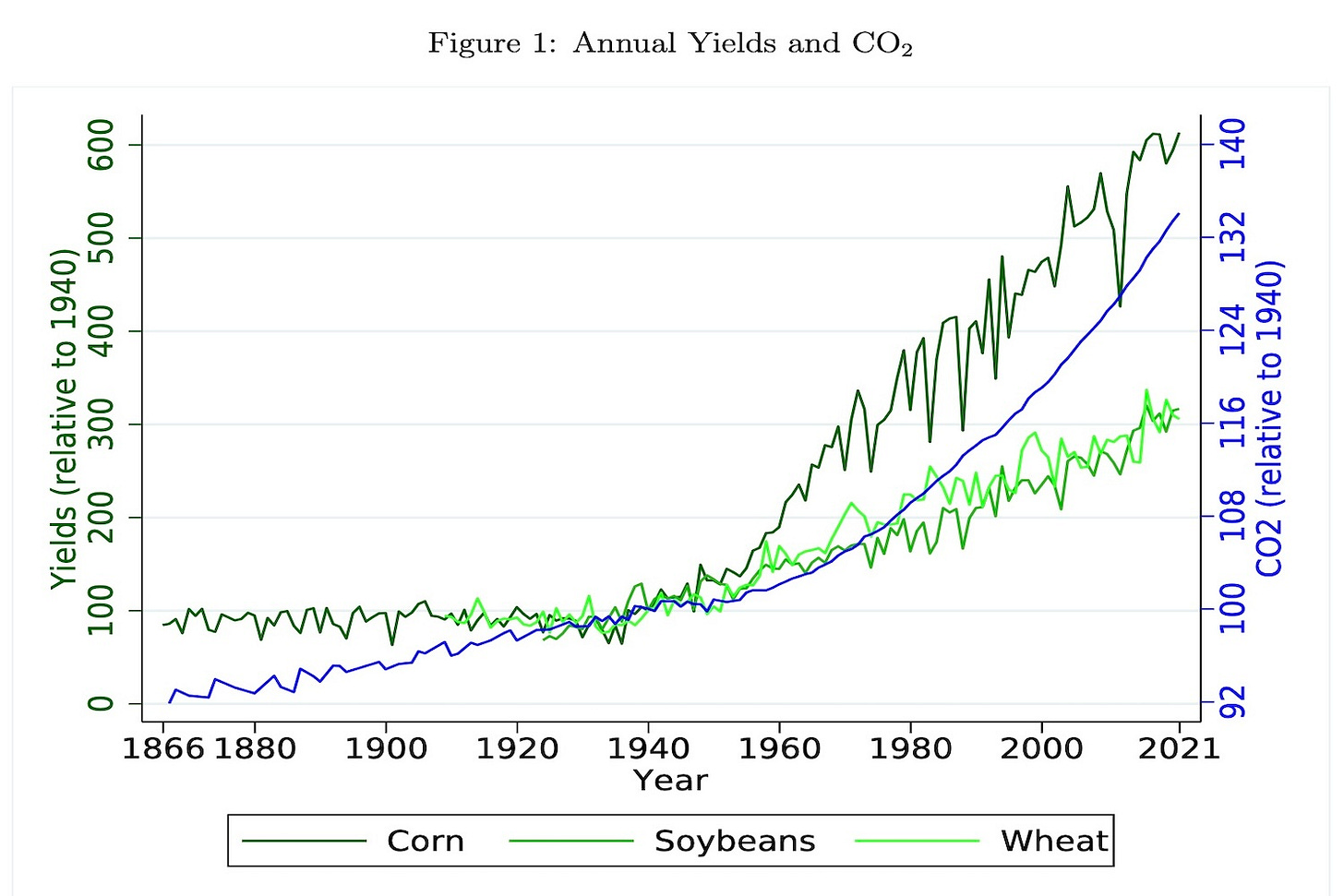Chesterton supposedly said “A society is in decay, final or transitional, when common sense really becomes uncommon.” That’s where we are today. There is little common sense and it has almost become a pejorative, in fact. Too many deal in politically correct narratives intended to deceive these days and one of those narratives is the falsehood that CO2 is somehow a pollutant. It’s anything but. Indeed, it’s the stuff of life as we all learned long before we graduated from high school. No one does not know CO2 grows plants that sustain all our lives, yet we are flooded with messaging denying this common sense.
The CO2 coalition is doing a phenomenal job countering the narrative and reinforcing the obvious benefits of CO2. A relatively recent study that I only learned about in this article from last week also serves to reinforce what we know from our early education on photosynthesis. The 2021/23 study is titled “Environmental Drivers of Agricultural Productivity Growth: CO₂ Fertilization of US Field Crops” and here is the abstract (emphasis and paragraphing added):
Post-war growth in agricultural productivity outpaced the US non-farm economy, spurred by steadily increasing crop yields. We argue that rising atmospheric CO₂ is responsible for a significant share of these yield gains. We present a novel methodology to estimate the CO₂ fertilization effect using data from NASA's Orbiting Carbon Observatory-2 (OCO-2) satellite.
Our study complements the many field experiments by regressing county yields on local CO₂ levels across the majority of US cropland under actual growing conditions. For identification, we utilize year-to-year anomalies from county-specific trends, an instrument for those CO₂ anomalies using wind patterns, and a spatial first-differences approach. We consistently find a large CO₂ fertilization effect: a 1 ppm increase in CO₂ equates to a 0.4%, 0.6%, 1% yield increase for corn, soybeans, and wheat, respectively.
In a thought exercise, we apply the CO₂ fertilization effect we estimated in our sample from 2015-2021 backwards to 1940, and, assuming no other limiting factors, find that CO₂ was the dominant driver of yield growth—with implications for estimates of future climate change damages.
The study, of course, pays the obligatory tribute to climate change, but cannot help but conclude with this:
We reiterate that climate change will likely have a negative impact on agriculture in aggregate, especially in regions exposed to extreme heat, and that CO2-driven yield increases may be offset by effects on food nutrition and quality. Nevertheless, this paper demonstrates that marginal increases in CO2 can also have a strong countervailing fertilization effect—and that such effects may account for a material proportion of historical productivity improvements in US agriculture with implications for climate modelling and the literature on agricultural productivity and structural transformation.
The implication for climate modelling, of course, is that the CO2 assumptions of current modeling are simply wrong.
Here is a chart summarizing the findings:
And, here is an interesting map showing the greening of America:
Is there anything else to say? Well, not really, if one exercises some common sense, even though it’s pretty uncommon these days
#CO2 #Fertilization #Climate #Emissions #Greening #CropYields






Guess Al Gore and John Kerry missed the part of basic science that talked about photosynthesis, while in school?
P.S. Excelent and timely piece.